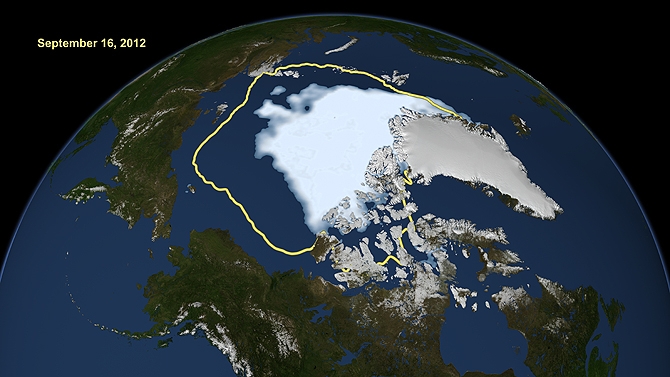
Global warming as a result of climate change is a real issue and is evidenced by all the extreme weather that has become a lot more frequent in the last decade or so. Tropical storms, polar ice melt and sea level rise are all serious issues. NASA's report on the Arctic ice is another stark reminder that the planet is faring badly in terms of climate.
This year's Arctic minimum was reached late last month, reports NASA. Between 19 and 23 September, the ice dropped to a minimum of 4.59 million square km over the north pole. As far as satellite records go, this is the sixth lowest ever, according to NASA's National Snow and Ice Data Center (NSIDC).
The sea ice in the northern tundra, notes the report, grows through winter, where it reaches its maximum point and then begins to shrink through winter, reaching the lowest point in September every year. Lowest ice levels for 2018, has tied with 2008 and 2010 for being sixth lowest over a period of over 40 years since satellite records started.
Researchers at the NSIDC have said that this value estimate of 4.59 million square km is only preliminary as of now, it is still possible that changing winds could melt the ice even further and drive the ice extent even lower, but this is not likely, they said.
The way Arctic sea ice melts and regains size can be likened to the Earth breathing. It follows a strict seasonal pattern, says the NASA Earth Observatory. And, there is a calculable growth and decay every year. It gets thick and spreads out over the Arctic circle during the autumn and winter season in the region. Over spring and summer, the ice thins out melts into the ocean.
Over the last few decades rising temperatures led to "significant decreases in summer and winter sea ice extents" says NEO. The decline in the Arctic ice cover will change and modify Earth's weather patterns as well as have an effect on the circulation of ocean waters.
Claire Parkinson, climate change scientist at NASA's Goddard Space Flight Center explained that while, "This year's minimum is relatively high compared to the record low extent we saw in 2012, but it is still low compared to what it used to be in the 1970s, 1980s and even the 1990s."









